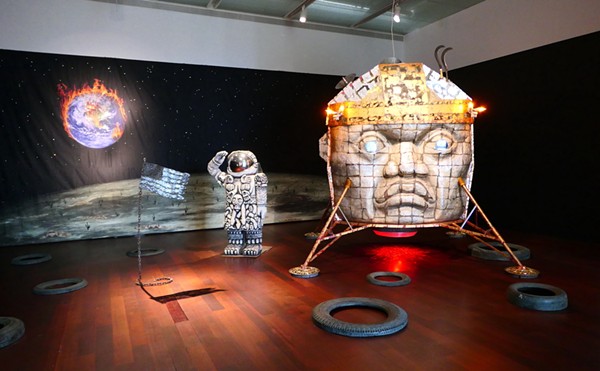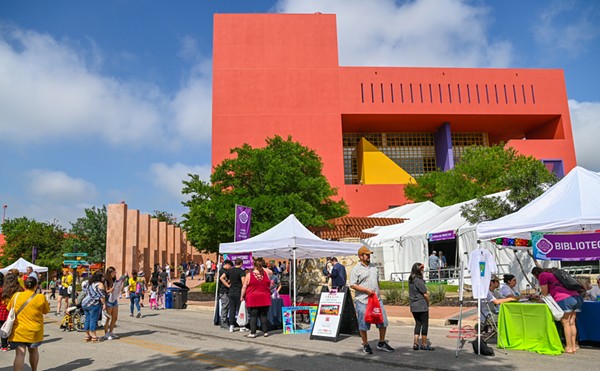“Fiber arts” is a bit of a catch-all — basically any creative outlet that has to do with thread, cloth, or natural fibers (even paper or wire) — and encompasses quilting, dyeing, weaving, and sewing. Over the last several decades, fiber artists have struggled to build from a traditionally feminine craft foundation and gain acceptance in the larger art world.
Saturday’s event was a microcosm of this tension: Many of the artists learned to sew, embroider, or knit as mid-20th-century children, and are only now, in retirement, pursuing the title of artist with a capital “A.” According to Susie Monday, FASA’s president, the group is “primarily women who view ourselves as artists. We have a connection to, and respect for, our traditions but want to move more into the world of mainstream fine visual arts.”
Staging a “fashion” show (FASA also hosts an annual fall art show, which focuses less on clothing) highlighted another of fiber arts’ dividing lines. One of my criticisms of the fashion end of fiber art is a tendency for the work to look more like a canvas than clothing — shapeless, boxy, in disharmony with the body. On FASA’s runway, tunics, shawls, capes, and square-cut jackets predominated. While admittedly providing the best surface area for processes like silk-screening, overdyeing, and large-scale embroidery, they don’t always result in looks you’d take off the runway.
Of course, “wearable art” as a commercial field is still very young. When designers began to incorporate some of the wearable-art techniques — most visible in recent seasons through the use of “romantic” or “bohemian” details like ethnic embroidery, ribbon, variegated color dye, and knits — they managed to bring tailoring to the pieces, but also, Monday notes, failed to see wearable art as “one-of-a-kind.” “Why pay several hundred dollars for a unique creation when Chico’s can outsource something similar for $90?” she muses.
That said, there were some knock-outs on the runway. Joanne Tschoepe’s dupioni-silk kimono, alternately dyed and silkscreened in layers of purple, orange, fuschia, and metallics, shone like a chemical sunrise. Karen Hedden’s “Thin Ice” had the couture feel of Marie Antoinette visiting Japan; the diaphanous silk jacket was handpainted in a navy, gray, and black lattice overlaid with thin metallic lines resembling branches or veins of gold, and trimmed at the collar, cuffs, and pockets with ruffled black organza.
Caryl Gaubatz’s “From a Distance,” a short, thick silk jacket handpainted in blues and browns, had a natural roughness to it. Changes in the dye were accented with random, spiky stitches of silk thread. Gaubatz, a retired Army nurse, buries her cloth in the earth with rusting objects, and pours dye through the dirt to saturate it, as a way to process her experiences with death and dying. Her serious artistic credibility and approach was enhanced by the beauty and accessibility of the piece. Perhaps simply telling its story is what fashion’s fiber art needs most.
For more information: Fiberartistsofsanantonio.org.

















